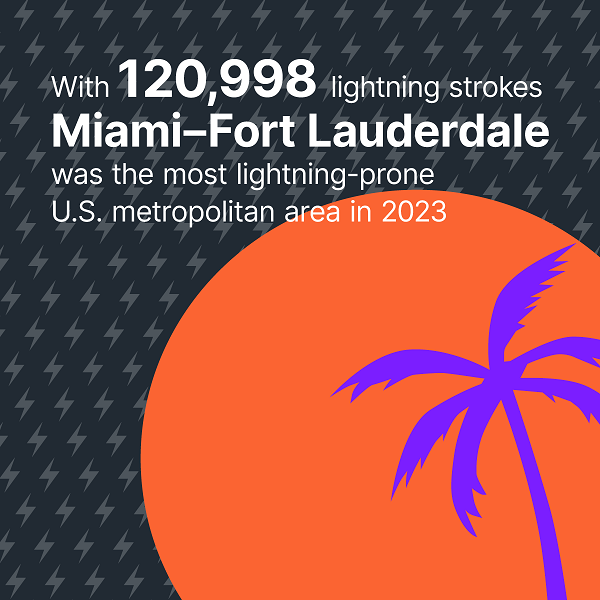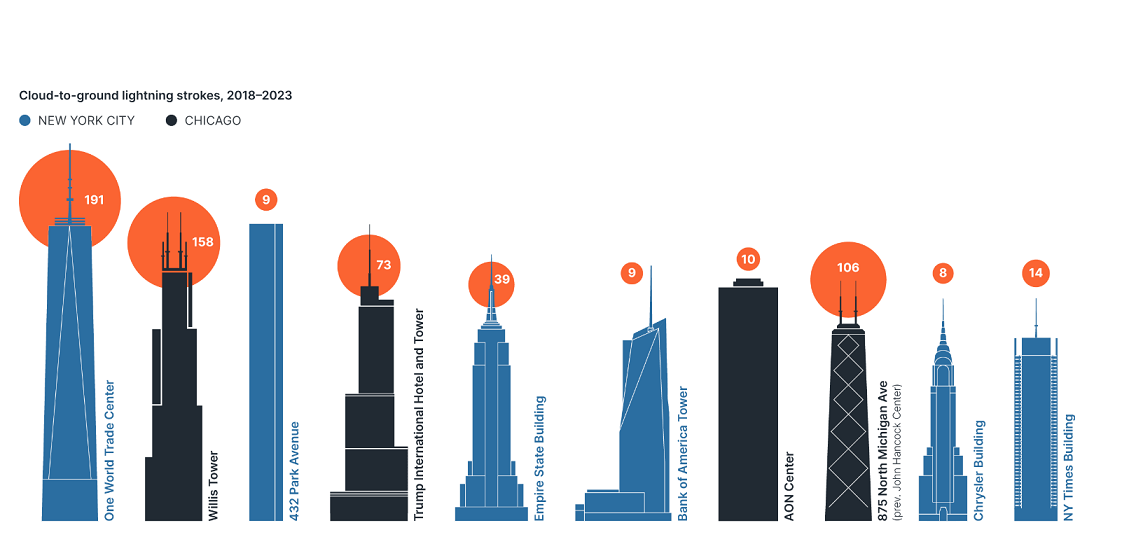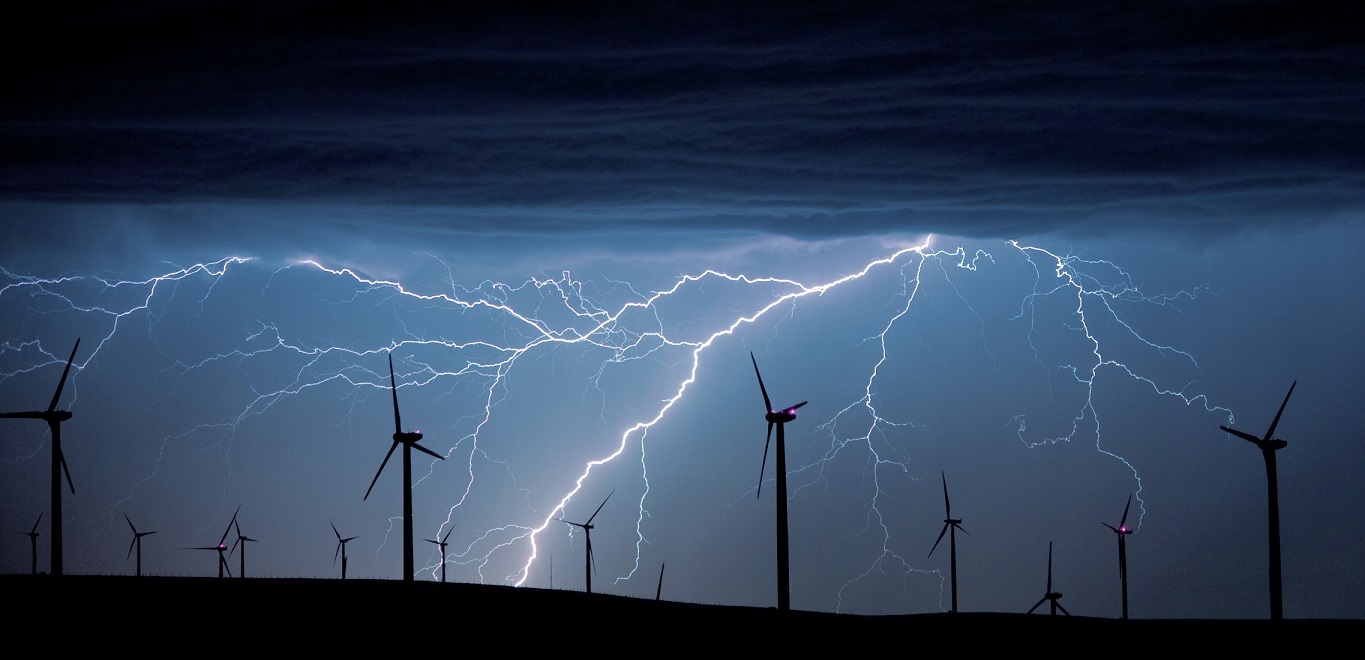Now in its seventh year, our annual lightning report unveils electrifying lightning statistics.
Lightning triggers wildfires, disrupts power, impacts businesses, and poses a significant hazard to life and property. Early warning systems with severe weather forecasting and real-time lightning alerts play an important role in protecting people, businesses, and infrastructure from thunderstorms.
Samuli Hänninen, Head of Vaisala Xweather
Our 2023 Annual Lightning Report zooms in on the realities of lightning in 2023, unveiling the risks it poses to communities and businesses. (Spoiler alert: Wind farms are at major risk!)
Amidst the extremes, 2023 marked the hottest year on record, showcasing an intricate connection between the complexities of rising temperatures and lightning. In our latest lightning report, we unravel lightning events around tall buildings, rank U.S. states by lightning activity, and highlight 2023's top 5 days for lightning frequency. Keep reading for a snapshot of the electrifying details of 2023's extreme weather.
Wind farms at great risk of lightning damage
A first-of-its-kind analysis revealed a whopping 77,494 lightning strokes were recorded at or near 1,500 major wind farms.

One wind farm in Hansford County, Texas, and another sprawling across Blaine and Custer Counties in Oklahoma stole the spotlight, with over 1,000 strokes each in 2023. Impressive - but scary. Lightning can wreak havoc on wind turbine blades and other crucial components. The price tag for this electrifying damage? Well over $100 million annually; painting a vivid picture of the industry's high-stakes relationship with lightning. Experts estimate that lightning damage accounts for 60% of blade losses and almost 20% of operational losses overall.
Luckily, not every wind farm sees the same amount of lightning each year; in fact, 33% did not experience any lightning strokes in 2023.
Top 20 most lightning-prone metropolitan areas
In 2023, Miami–Fort Lauderdale, Florida, claimed the title of the most lightning-prone metropolitan area in the United States with 120,998 cloud-to-ground lightning strokes, averaging more than 35 per square kilometer. Houston, Texas, followed closely with 73,114 strokes, while Atlanta, Georgia, recorded 55,490 strokes. The Dallas–Fort Worth–Arlington area in Texas accumulated 41,038 lightning strokes. On the East Coast, the New York–Jersey City–Newark metropolitan area in New York and New Jersey experienced 28,132 lightning strokes.

For lightning risk measured per square kilometer, five Florida metropolitan areas topped the list in 2023: Miami–Fort Lauderdale, Palm Bay–Melbourne, Cape Coral, Orlando, and Jacksonville.
Famously tall buildings attract sightseers... and lightning
Altogether, 10 of the most famously tall buildings in the U.S. were struck by lightning 104 times in 2023. The Willis Tower in Chicago, Illinois, experienced 38 instances of lightning strokes. Following closely in New York City, One World Trade Center ranked second with 26 lightning incidents. Securing the third position was 875 North Michigan Avenue (formerly known as the John Hancock Center) in Chicago, having encountered 15 lightning strikes.

Lightning around buildings varies considerably from year to year. For example, One World Trade Center had 58 lightning strokes in 2018 but just 8 in 2021. The median location accuracy for this analysis was only 81 meters.
High-rise structures, due to their significant height, naturally attract lightning strikes. Chicago, in particular, experiences more lightning compared to New York City. Interestingly, One World Trade Center stands out with a notably higher frequency of lightning strikes than other tall buildings in Chicago (over the five years covered by the analysis, 2018-2023).
